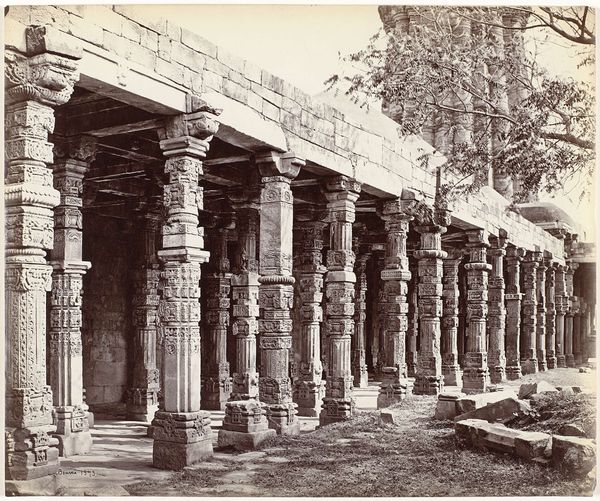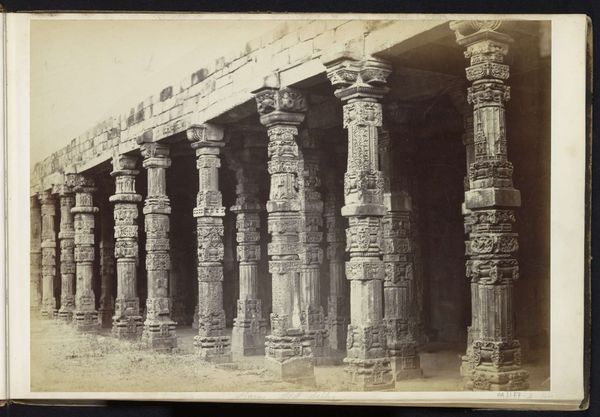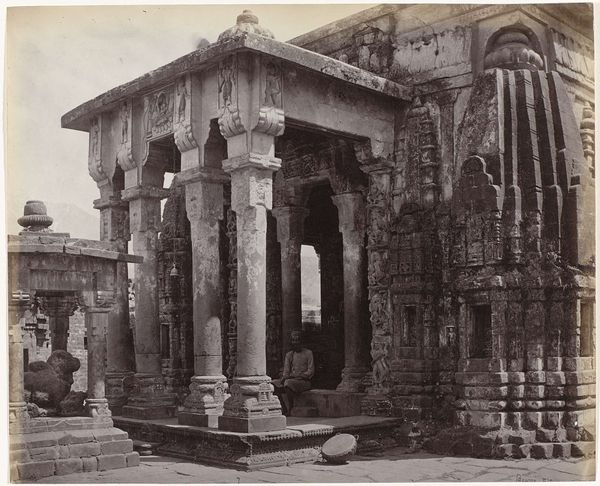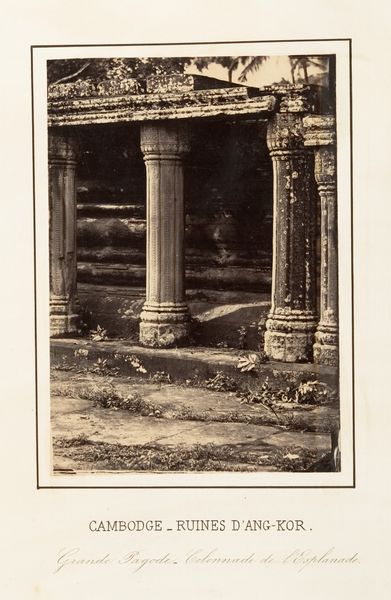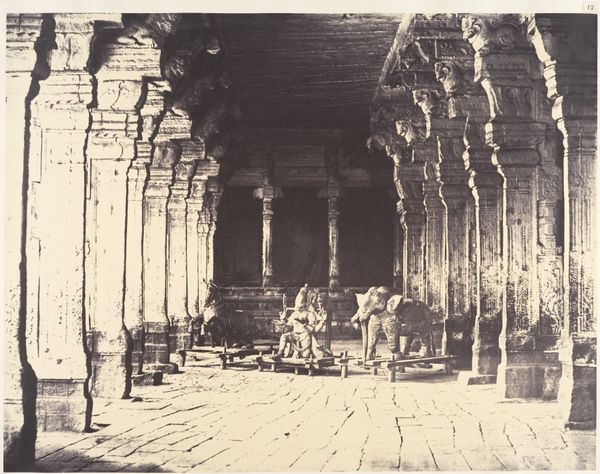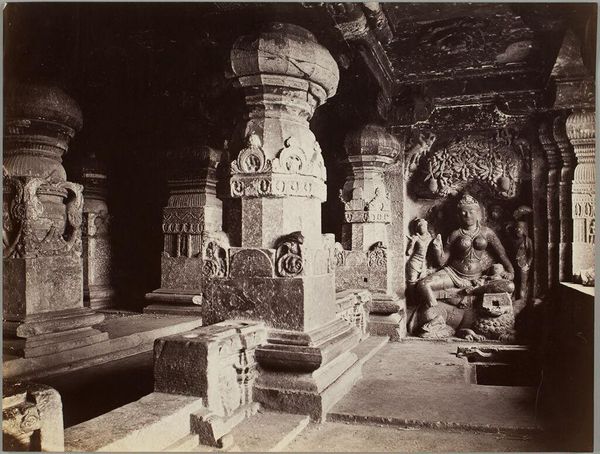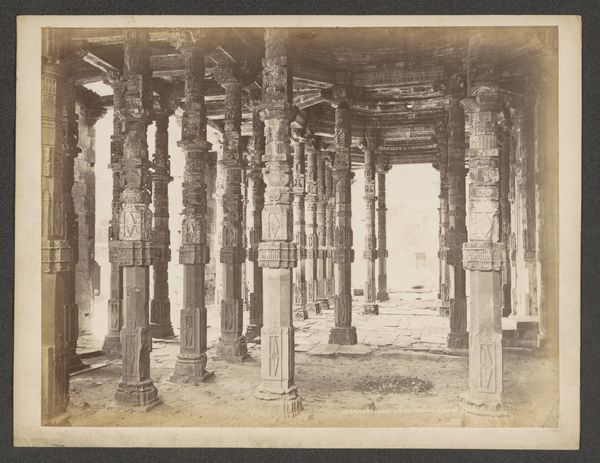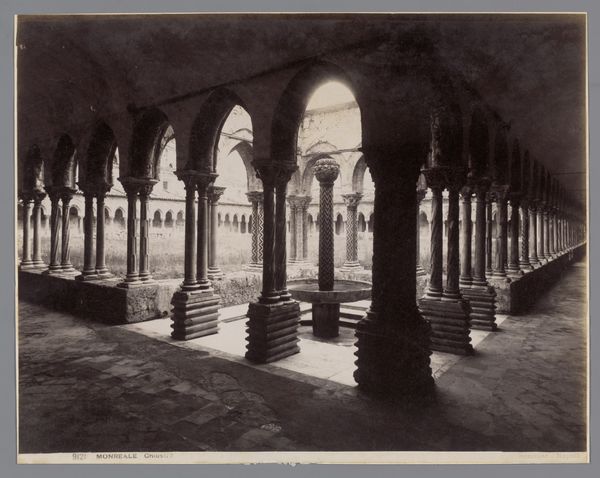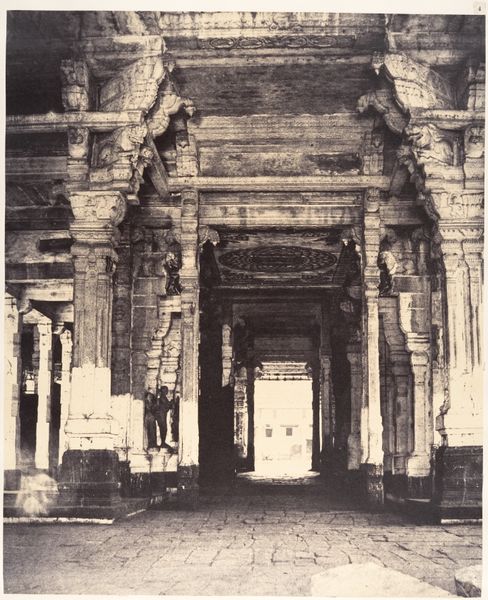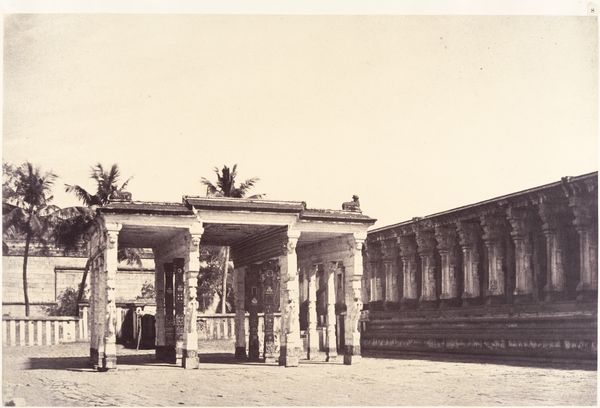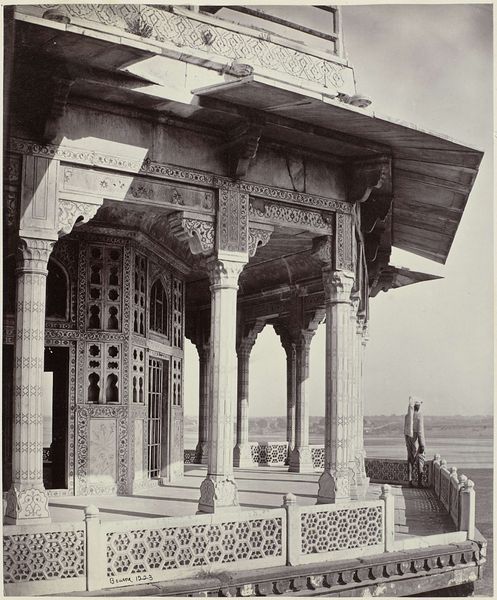
Carved pillars of the Panch Mahal at Fatehpur Sikri, Uttar Pradesh, India 1863 - 1865
0:00
0:00
print, photography, site-specific, architecture
# print
#
landscape
#
outdoor photograph
#
photography
#
historical photography
#
couple photography
#
column
#
site-specific
#
islamic-art
#
public art photography
#
architecture
Dimensions: height 233 mm, width 291 mm
Copyright: Rijks Museum: Open Domain
Editor: This photograph, taken by Samuel Bourne between 1863 and 1865, captures the carved pillars of the Panch Mahal at Fatehpur Sikri. The repeating columns receding into the distance really strike me. How would you approach an interpretation of this piece? Curator: Formally, it's a study in texture and repetition, isn't it? Bourne uses light and shadow to accentuate the intricate carvings on each pillar, creating a mesmerizing visual rhythm. Notice how the pillars’ structures become units of patterned information; some are globular, some are threaded. What strikes you about this? Editor: I think I'm drawn to the variations within the repetition, each column is slightly different and it breaks the pattern, introducing this beautiful element of irregularity. Curator: Precisely! The use of differing pillar forms creates structural and rhythmic interest. The shadows cast also play a significant role. What do you observe about them? Editor: They're angular and cut across the ground, contrasting with the circular forms of some pillars, and emphasizing depth. I hadn't considered how much they added to the overall composition. Curator: Indeed, light is presented as both substance and pattern. Thinking about this image structurally, how can you tie together light, shadow and architectural form? Editor: The contrast of light and shadow enhances our experience of the various textures present, enriching our awareness of their shapes and materiality. Curator: Well observed. Ultimately, the appeal of Bourne's work lies in its celebration of detail and structural articulation. What began as documentary, in your view, now exists as a striking exploration of formal elements? Editor: I initially overlooked many details by seeing it simply as documentary, but it’s very clear now. Thank you for this close look.
Comments
No comments
Be the first to comment and join the conversation on the ultimate creative platform.
